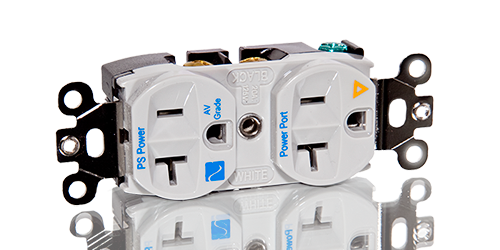I have often thought of my life as one lived by different people. I feel distinctly different than when I was a boy, a teenager and a young man. Different enough that I seem almost like different people. And one of those different people used to be far more impatient than the me of today. So much more impatient that whenever I came into our engineering offices with a look of excitement, the engineers would flee for their sanity. I would routinely yank hard at the rudder, stopping one project to start another. While not entirely cured of this tendency, I would have to say I am much better than days gone by.
I have learned that I have to stand in line and wait my turn. Such is the case with the new power amplifier we are designing. I have been standing in line waiting to test out the latest front end. I have now moved up to first in line and I thought I'd give you a sneak peek at what's under the covers.
For those of you who have followed my Posts on a regular basis you may remember I delayed the launch of the PerfectWave Power Amplifier project, scheduled for release this month, because I was unhappy with the sound. The high frequency part of the sound, to be specific. The highs just weren't there. Sure it measured perfect, but sonically the amplifier sounded dull and lifeless on the top end.
My suspicion of why this happened centers around the input stage of this power amplifier, which is broken into two sections: the input stage and the output stage. The original input stage was designed around a combination of bipolar and JFET devices in a classic discrete fully balanced amplifier topology. There were lots of devices in the parallel amplification stages, minimal feedback, high output bipolar current buffers, high input impedance JFET buffers. It's a derivation of circuitry we've used for years and has served us well.
But the sophistication of the Hypex output stages are such that I am guessing they are revealing some of the closed in nature of this type of input stage more than I would like. That closed in nature goes hand-in-hand with the amount of feedback in the stage and the way it's implemented.
I know, I can see some of my readers eyebrows raising at about the same rate the hair on the back of their necks is shooting up reading that. But I can tell you that as the level of feedback goes down, the degree of openness goes up. In fact, there seems to be a direct 1:1 relationship when auditioned as a straight preamplifier.
So, you might ask, why not simply remove all the feedback and get on with it? Well, in the end that's what I've done but it was not without a great deal of agony as a designer because feedback provides a number of benefits that have to be made up some other way if you're going to get the results you need.
I'll explain what I did on the input stage tomorrow. My fingers are crossed that perhaps by this weekend I'll be auditioning the new amp.
It's hard standing in line just to roll the dice.










